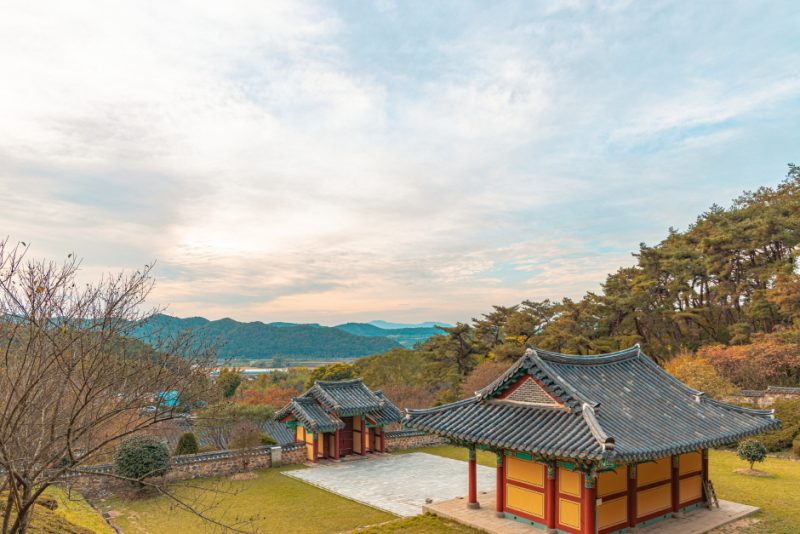Discover the Historic Wolbongseowon Confucian Academy
Welcome to Wolbongseowon Confucian Academy, a historic destination that offers a fascinating insight into South Korea’s rich cultural heritage. Established in 1578, this academy has played a significant role in honoring the study and virtue of esteemed Confucian scholars throughout the centuries.
A Glimpse into History
Originally founded by Kim Gyehwi and other Confucian scholars, Wolbongseowon Confucian Academy was initially established to pay homage to Ki Daeseung’s intellectual contributions. Over time, the academy has seen various changes and relocations. In 1646, it was moved to its present location, and in 1654, King Hyojong bestowed the name “Wolbong” upon it.
In 1671, at the suggestion of Song Siyeol, the shrines of Bak Sang and Bak Sun were moved from Deoksansa Shrine and incorporated into Wolbongseowon Confucian Academy. In 1673, the shrines of Kim Jangsaeng and Kim Jip were also added, further enriching the academy’s cultural significance.
Unfortunately, during the late 19th century, the academy was abolished as part of the abolition policy of Daewongun in 1868. However, its legacy endured, and in the following decades, efforts were made to restore and preserve this important cultural site.
A Journey Through Time
As you explore Wolbongseowon Confucian Academy, you’ll encounter various architectural gems that echo the academy’s history. Bingwoldang Hall, built in 1938 by Confucian scholars from Jeollanam-do, stands as a testament to their dedication to preserving the cultural heritage of South Korea.
Gojiksa Shrine, constructed in 1972, adds to the academy’s historical significance. The Jangpangak Pavilion, built in 1978, houses the preserved woodblocks of Gobongjip, offering visitors a glimpse into the intellectual pursuits of Confucian scholars of the past.
Don’t miss the chance to walk through Oesammun Gate, which was constructed in 1978, followed by Sau in 1980 and Naesammun Gate in 1981. These gates provide a sense of grandeur and mark the entry points to the various sections of the academy.
An Immersive Cultural Experience
Visiting Wolbongseowon Confucian Academy is not just a journey through history but also an opportunity to immerse yourself in South Korean culture and tradition. As you walk through the serene surroundings, take a moment to reflect on the teachings and values that have shaped this nation.
Whether you are a history enthusiast, a cultural explorer, or simply someone seeking a tranquil escape, Wolbongseowon Confucian Academy offers a unique experience that combines history, culture, and natural beauty.
Plan your visit to Wolbongseowon Confucian Academy today and embark on a memorable journey through time and tradition.

